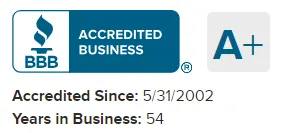Achieving and maintaining the optimal pH levels in your spa is not just a matter of chemical balance; it’s about ensuring a delightful and safe soaking experience. Dive into this comprehensive guide for 2023, where we’ll explore the essential steps to balance pH levels in your spa, guaranteeing a pristine and enjoyable environment for you and your guests.
Understanding the Ideal pH Range
The pH level sweet spot for hot tubs, carefully set between 7.2 to 7.8, serves as the cornerstone for water quality. Let’s take a meticulous look at why this seemingly narrow range is considered the gold standard. Explore its pivotal role in preventing corrosion of spa components, ensuring the maximum efficacy of sanitizing chemicals, and how it contributes to an atmosphere of pristine comfort for spa enthusiasts.
Why is pH Important? Unraveling the Key Benefits
Delving further into the importance of maintaining the correct pH level reveals a myriad of benefits that go beyond chemical equations:
Comfort: Beyond the prevention of skin and eye irritation, maintaining the right pH levels elevates the spa experience to new heights of comfort and enjoyment.
Chemical Efficiency: Witness the symbiotic relationship between pH and sanitizers, operating at their peak efficiency within the recommended pH range, ensuring that your spa water remains consistently clean and safe.
Equipment Longevity: Discover how the right pH level acts as a shield, extending the life of your spa equipment by thwarting corrosion and damage.
Adjusting pH Levels with Increasers and Decreasers: A Detailed Dive
Adjusting pH Levels with Increasers and Decreasers To keep your spa water in the optimal pH range, it’s crucial to use pH increasers or decreasers based on your current levels.
Using pH Increasers:
If your spa water’s pH level falls below 7.2, pH increasers come to the rescue. An example of a pH increaser is sodium carbonate. Follow the product instructions meticulously, and retest the water after a few hours to ensure the pH aligns with the desired range.
Example: Imagine you’ve just tested your spa water, and the pH level is at 7.0. Using a pH increaser, such as sodium carbonate, you follow the recommended dosage. After a few hours, retesting reveals a balanced pH of 7.4, providing an optimal spa environment.
Using pH Decreasers:
Conversely, if your pH level is above 7.8, pH decreasers become necessary. An example of a pH decreaser is sodium bisulfate. Follow the product instructions closely, allowing time for the adjustment to take effect before retesting.
Example: Your spa water’s pH is at a slightly high 8.0. Using a pH decreaser, like sodium bisulfate, you follow the recommended dosage. After a few hours, the retest shows a balanced pH of 7.6, creating an ideal spa setting.
Balancing Alkalinity Levels:
Balancing Alkalinity Levels Alkalinity, closely linked to pH, refers to the water’s ability to resist changes in pH. The recommended alkalinity level for hot tubs is between 80 and 120 parts per million (ppm).
Increasing Alkalinity:
If your alkalinity level is below 80 ppm, an alkalinity increaser or simple baking soda can be used. This stabilizes the pH and ensures a more consistent spa experience.
Example: Your alkalinity level is at a low 70 ppm. You decide to use baking soda as an alkalinity increaser. After the appropriate dosage, the retest shows an improved alkalinity level of 85 ppm, providing a stable spa environment.
Decreasing Alkalinity:
If your alkalinity exceeds 120 ppm, an alkalinity decreaser is necessary. Regular testing and adjustments are vital to prevent imbalances that can affect water quality.
Example: Your alkalinity is at a high 130 ppm. Using an alkalinity decreaser, you follow the recommended dosage. After a few hours, the retest reveals a balanced alkalinity of 115 ppm, ensuring water stability.
Testing and Regular Maintenance:
Testing and Regular Maintenance To guarantee your spa water consistently meets the ideal pH and alkalinity levels, regular testing is essential. Utilize test strips or a liquid test kit, following the manufacturer’s guidelines.
After a Water Change After draining and refilling your spa, always retest and readjust the pH and alkalinity levels. New water may require additional balancing to reach the optimal conditions.
Conclusion
Balancing pH levels in your spa is a fundamental aspect of spa maintenance. By understanding the ideal pH range, using the right products to adjust pH and alkalinity levels, and maintaining a regular testing schedule, you can ensure a clean, comfortable, and enjoyable spa experience. Prioritize the health of your spa and the well-being of its users by incorporating these practices into your routine for a spa that stands the test of time.






